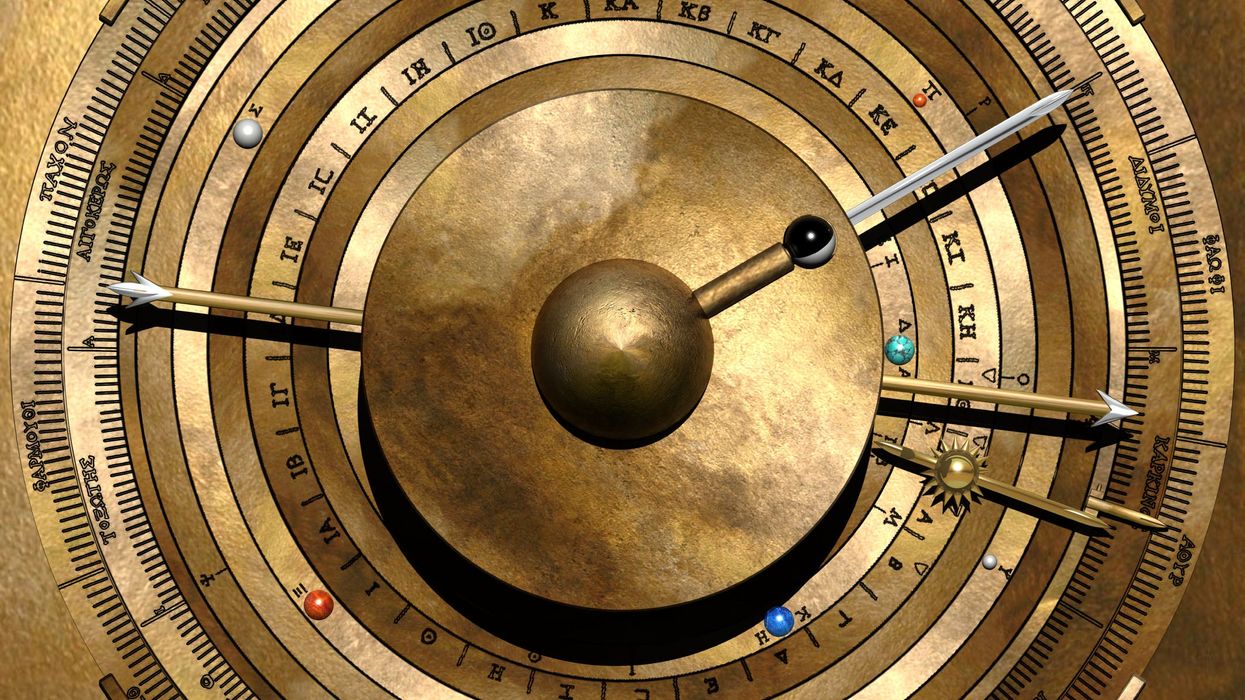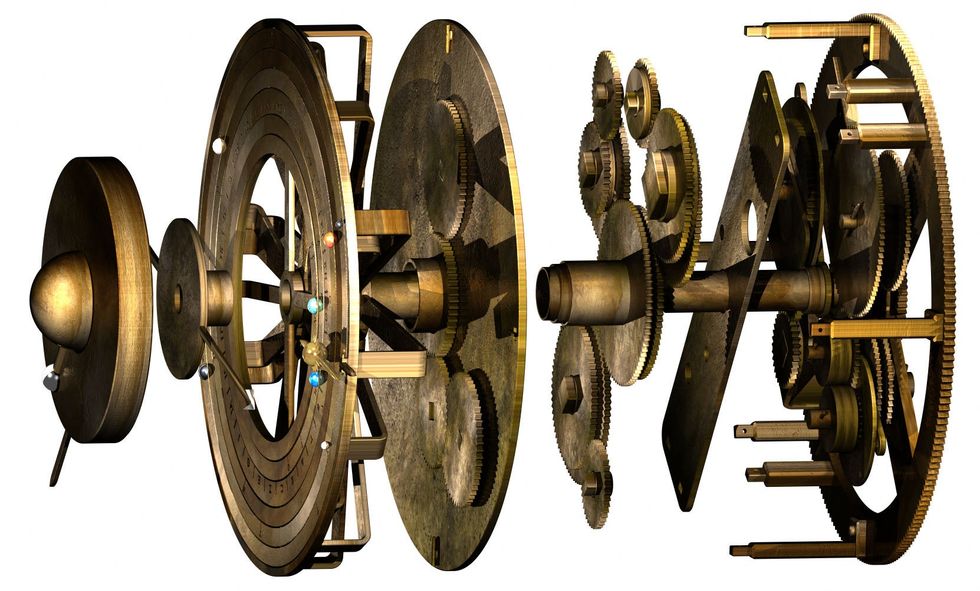
An ancient Greek hand-powered mechanical device for predicting astronomical events has been recreated, offering a fresh understanding of how it worked.
The 2,000-year-old Antikythera Mechanism is considered the world’s first analogue computer, used to forecast positions of the sun, moon and the planets, as well as lunar and solar eclipses.
It was first discovered in a Roman-era shipwreck in 1901 by Greek sponge divers near the Mediterranean island of Antikythera.
Only 82 fragments have survived – about a third of the entire astronomical calculator – leaving researchers baffled about its true form and capabilities.
The back of the mechanism was solved by previous studies but the gearing system at the front has remained a mystery, until now.
Scientists from University College London (UCL) believe they have finally cracked this complex 3D puzzle using computer modelling, pushing research a step closer to understanding the full power of the Antikythera Mechanism and how accurately it was able to predict astronomical events.
Lead author, Professor Tony Freeth, said: “Ours is the first model that conforms to all the physical evidence and matches the descriptions in the scientific inscriptions engraved on the Mechanism itself.
“The sun, moon and planets are displayed in an impressive tour de force of ancient Greek brilliance.”
The largest surviving fragment, called Fragment A, displays features of bearings, pillars and a block. Another, known as Fragment D, shows an unexplained disk, 63-tooth gear and plate.
Inscriptions on the back cover include a description of the cosmos display, with the planets moving on rings and indicated by marker beads, which scientists set out to reconstruct.
Using previous X-ray data and an ancient Greek mathematical method, they were able to explain how the cycles for Venus and Saturn were derived, as well as recovering the cycles of all the other planets, where the evidence was missing.
Their findings were published in the Scientific Reports journal.














